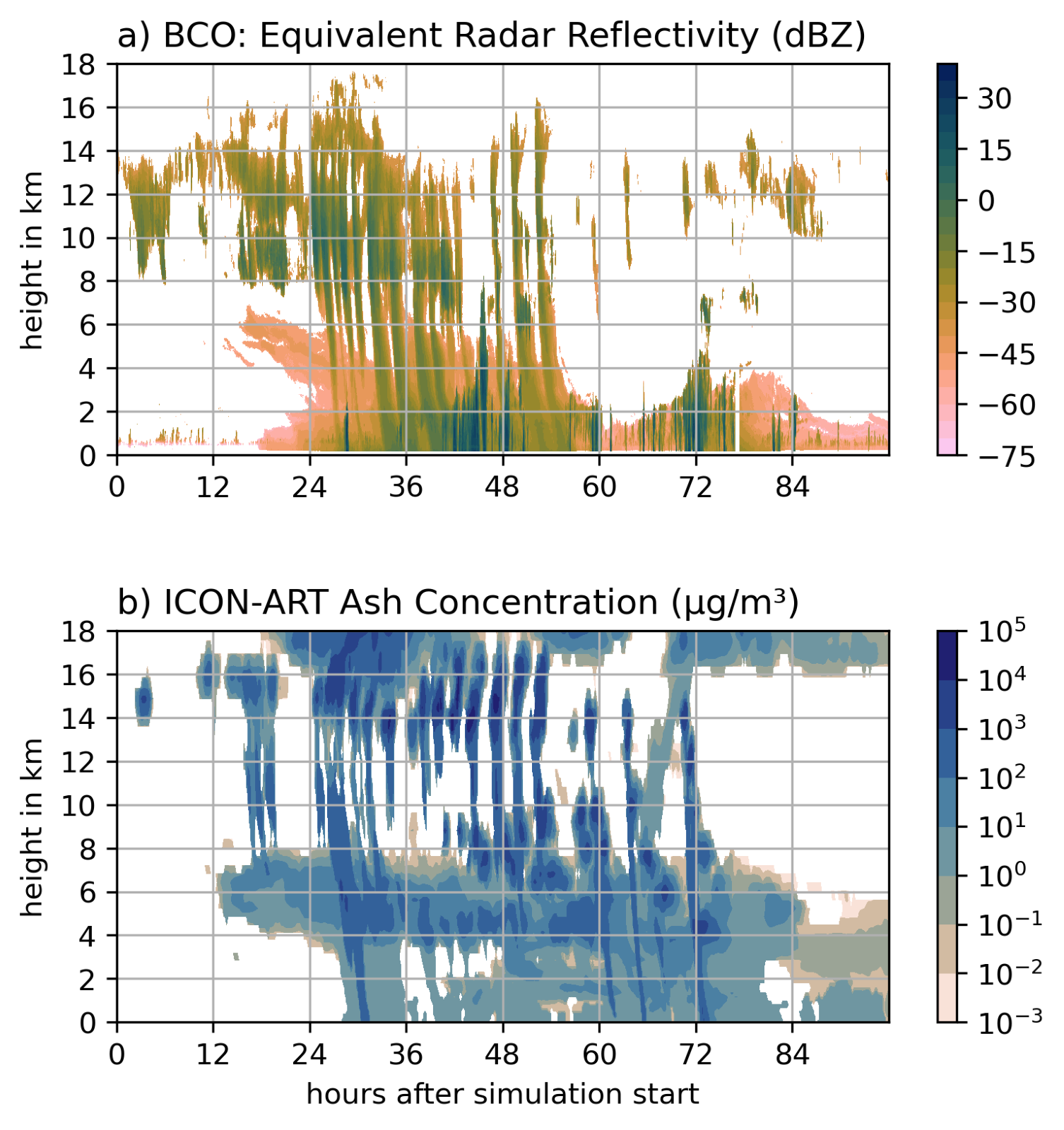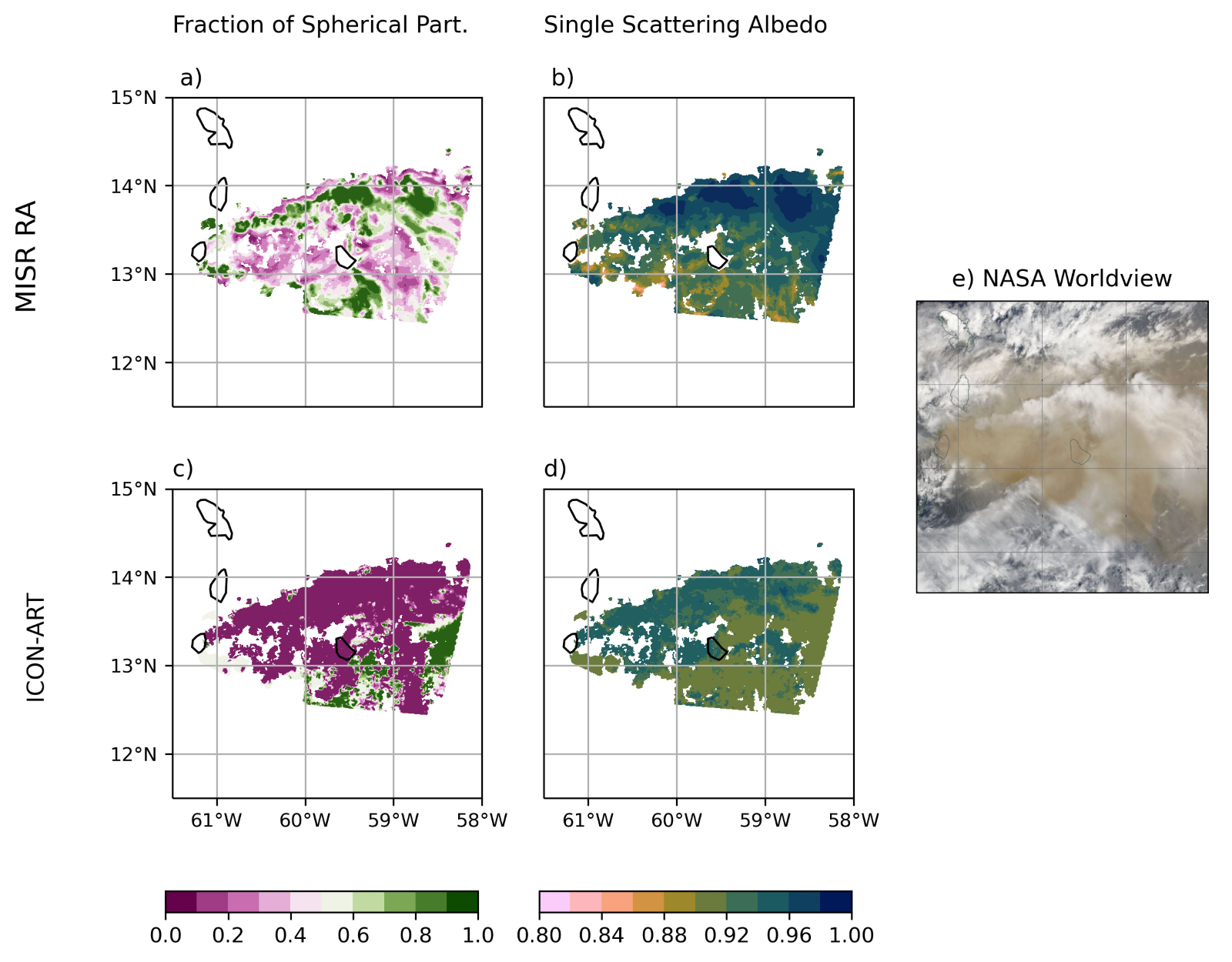Dispersion and Aging of Aerosols after La Soufrière Eruption 2021
Volcanic eruptions emit large amounts of ash and sulfur dioxide into the atmoshere. Chemical and aerosol dynamical processes lead to sulfate aerosol production and aging of the ash particles in the volcanic plume. These processes can increase the removal of the compounds and modify the interaction of the particles with radiation. Therefore, including the processes forming sulfate and aged ash in models is necessary to improve dispersion forecasts and predict the climate impact of large volcanic eruptions.
As a case study, we simulated the plume development during the La Soufrière eruption in April 2021 and compared our results to observational products. The La Soufrière volcano is located on the Carribean island Saint Vincent. Modeling its latest eruption is challenging because the emission occurred during more than 40 indidual eruption phases. The timing of these phases and the height of the maximum emissions need to be considered in the model in order to allow a comparison to observations close to the emission. The approach to model such complex emissions was already presented [1]. The eruption phases lasted between 10 min and 1 hour, and they reached heights between 5.7 and 18.3 km above the vent.
Figure 1 shows radar reflectivity signals above Barbados (approximately 150 km east of the volcano) measured by the Barbados Cloud Observatory (BCO) [2] and modeled ash concentrations. The distribution of ash close to the volcano is strongly driven by the emissions from the individual eruption phases, which is visible in observations and model. The vertically orientated streaks arise because the emissions occur along a vertical profile. Slower wind speeds in lower altitudes lead to the slight tilting of the streaks. The discrepancies between model and observations between 54 and 74 hours after simulation start arise because rain removed ash in the area around Barbados. However, the model did not simulate rain in the area between La Soufrière and Barbados.

The fraction of spherical particles and the single scattering albedo (SSA) from the Multiangle Imaging SpectroRadiometer (MISR) Research Aerosol (RA) algorithm provide information about the aging and composition of the plume. Whereas pure ash particles are highly non-spherical, sulfate and aged ash particles are spherical. Furthermore, a high SSA indicates an increased amount of sulfate and hydrometeors in the plume. In the southern part of the plume, the fraction of spherical particles increases with larger distance from the volcano because more time was available for aging and a good agreement between model and observations was achieved. In the northern part of the plume, the SSA increases in model and observations. In case of the modeled data, this increase in SSA is related to a decrease in ash particle diameter. In case of the observations, this might also be related to the abundance of hydrometeors from the thick meteorological cloud visible in the picture on the right.

For more details on this work, we refer to our paper published in JGR-Atmospheres [4].
[1] https://www.imk-tro.kit.edu/11476.php
[2] https://mpimet.mpg.de/en/barbadosstation1
[3] https://worldview.earthdata.nasa.gov/?t=2021-04-10-T09%3A12%3A58Z
[4] Bruckert, J., Hirsch, L., Horváth, Á., Kahn, R. A., Kölling, T., Muser, L. O., et al. (2023). Dispersion and aging of volcanic aerosols after the La Soufrière eruption in April 2021. Journal of Geophysical Research: Atmospheres, 128, e2022JD037694. https://doi.org/10.1029/2022JD037694
